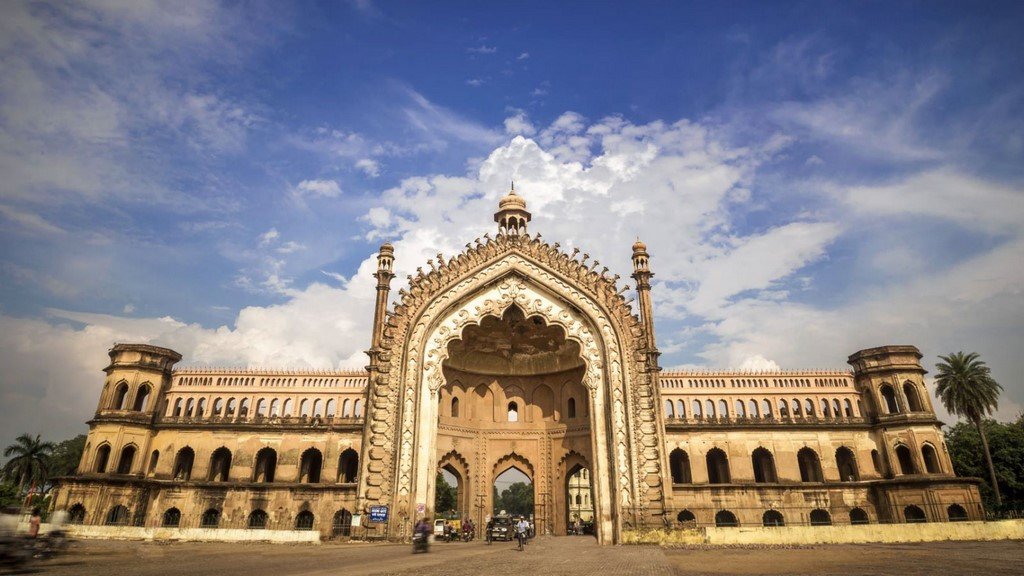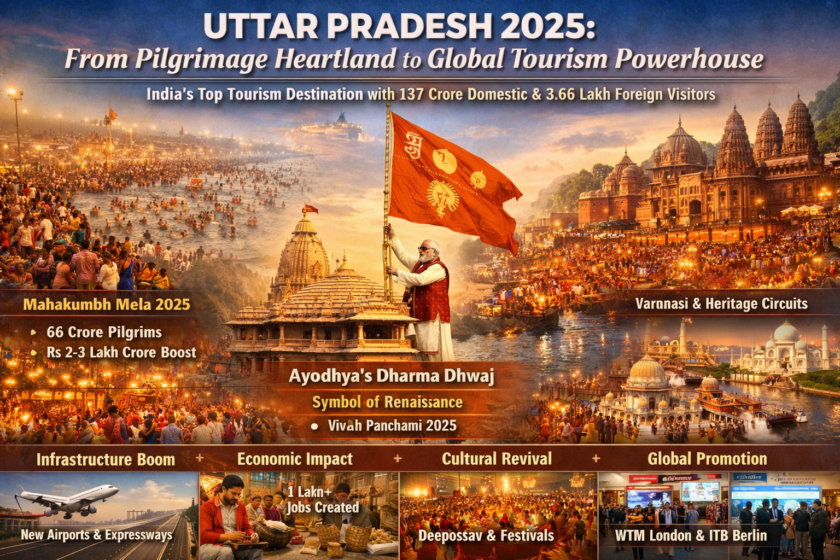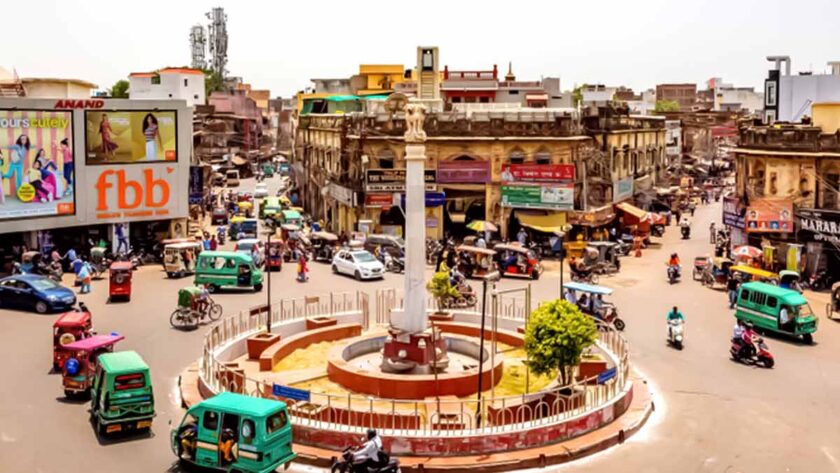Lucknow: Lucknow, the capital of the Indian state of Uttar Pradesh, is renowned for its rich architectural heritage, which reflects a blend of different styles, including Mughal, Awadhi, and British colonial influences. Here are some of the key architectural highlights of Lucknow:
1. Bara Imambara
Built by Nawab Asaf-ud-Daula in 1784, Bara Imambara is a grand complex that includes a mosque, courtyards, gateways, and the famous Bhool Bhulaiya (labyrinth). The structure is an example of Mughal architecture with a distinct Awadhi influence. It is known for its large vaulted central chamber which has no supporting beams.
2. Chota Imambara
Also known as Imambara of Hussainabad, this monument was built by Nawab Muhammad Ali Shah in 1838. The Chota Imambara serves as a congregation hall for Shia Muslims and houses the tombs of Muhammad Ali Shah and his mother. The building is adorned with chandeliers and decorations from China, Belgium, and other countries.
3. Rumi Darwaza
This imposing gateway, often referred to as the Turkish Gate, was also constructed under Nawab Asaf-ud-Daula in 1784. The Rumi Darwaza, standing 60 feet tall, is an example of Awadhi architecture, inspired by a similar gateway in Istanbul.
4. Residency Complex
The Residency was built during the late 18th century by the British as a refuge for British officials. It became famous during the Siege of Lucknow in 1857, a significant event during the Indian Rebellion. The complex is now in ruins but serves as a poignant reminder of the city’s colonial past.
5. La Martinière College
Established by Major General Claude Martin in 1845, La Martinière College is a unique blend of European and Mughal architectural styles. The school building, known as Constantia, is one of the most impressive colonial buildings in Lucknow, featuring grand facades, ornate interiors, and well-manicured gardens.
6. Kaiserbagh Palace Complex
Built by Nawab Wajid Ali Shah between 1848 and 1850, Kaiserbagh Palace was meant to be a grand royal residence. Although parts of the palace were destroyed during the British annexation, the remaining structures reflect a mix of Mughal and European architectural elements.

7. Dilkusha Kothi
This hunting lodge built in the early 19th century by Nawab Saadat Ali Khan is another fine example of European-style architecture in Lucknow. The building, now in ruins, was modeled after Seaton Delaval Hall in Northumberland, England, and features baroque architecture.
8. Ambedkar Memorial Park
A more recent addition, the Ambedkar Memorial Park, was constructed by the government of Uttar Pradesh and inaugurated in 2008. The park, dedicated to Dr. B.R. Ambedkar, features modern architectural elements, including extensive use of red sandstone, grand statues, and expansive open spaces.
9. Safed Baradari
Built in the mid-19th century, the Safed Baradari (White Pavilion) was originally used for mourning ceremonies by the Shia community. It is an elegant white marble structure, showcasing the architectural finesse of the era.
10. Clock Tower
Situated near the Rumi Darwaza, the Husainabad Clock Tower was built in 1881 by Nawab Nasir-ud-din Haider. Standing at 221 feet, it is one of the tallest clock towers in India and exhibits Victorian-Gothic architectural style.
Lucknow’s architectural landscape is a testimony to its rich history and cultural amalgamation, making it a fascinating city for anyone interested in historical and architectural studies.





